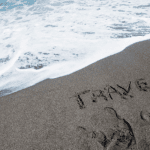
Imagine yourself in a dense, lush jungle, surrounded by the wonders of nature. You hear the melodious chirping of birds, the rustling of leaves, and the distant roar of a majestic animal. It’s a wildlife lover’s dream come true! But as exciting as wildlife watching tours can be, it’s crucial to do so responsibly and ethically. In this article, we’ll explore the world of ethical wildlife watching tours and provide you with valuable tips on how to make the most of these incredible experiences while protecting the animals and their habitats.
The Beauty of Wildlife Watching
Wildlife watching tours offer an opportunity to connect with nature in a profound way. Whether you’re observing a pride of lions on the African savannah, tracking elusive jaguars in the Amazon rainforest, or witnessing the grace of humpback whales in the open ocean, these encounters can leave you awestruck and inspired. However, it’s essential to remember that the well-being of the animals and their environments should always come first. Ethical wildlife watching principles:
Choose Responsible Tour Operators
The first step in ethical wildlife watching is selecting tour operators that prioritize animal welfare and conservation. Look for companies that have a strong commitment to responsible tourism and adhere to ethical guidelines. They should provide informative guides who educate visitors about the animals and ecosystems while emphasizing the importance of minimizing disturbance.
Research the Destination
Before embarking on a wildlife watching tour, familiarize yourself with the destination’s native species, local regulations, and conservation efforts. Understanding the environment and its inhabitants allows you to appreciate the significance of your experience and behave responsibly. It also helps you avoid supporting activities that harm wildlife.

Keep Your Distance
One of the cardinal rules of ethical wildlife watching is maintaining a safe and respectful distance from the animals. Using binoculars, telephoto lenses, and observation hides can help you get a closer look without causing undue stress to the creatures. Remember that getting too close can disrupt their natural behaviors and potentially endanger both you and the animals.
Silence is Golden
Animals rely on their keen senses to hunt, communicate, and stay alert to predators. Excessive noise from tourists can disturb them and lead to stress or even abandonment of their nests or young. Keep conversations hushed, turn off noisy devices, and listen to the sounds of nature. It’ll enhance your experience and minimize your impact on wildlife.
No Feeding or Touching
Feeding wildlife may seem harmless, but it can have severe consequences. Human food can harm animals’ health, alter their natural behaviors, and make them dependent on handouts. Similarly, touching or approaching animals can stress them and increase the risk of disease transmission. Always resist the temptation to feed or touch wild animals.

Stay on Designated Paths
When exploring natural habitats, always stick to designated paths and trails. Trampling through delicate ecosystems can harm plants, disrupt wildlife habitats, and erode the landscape. Show respect for the boundaries established by park authorities to minimize your ecological footprint. This simple act ensures that you leave minimal impact on the environment, allowing both flora and fauna to thrive undisturbed.
Avoid Flash Photography
In many cases, flash photography can distress animals, especially those with sensitive eyes, such as owls and nocturnal creatures. Be considerate and refrain from using flash when photographing wildlife. Utilize natural light and the right camera settings to capture breathtaking moments without causing harm.
Conclusion
Ethical wildlife watching tours offer a chance to marvel at the wonders of the natural world while respecting and protecting the animals and their habitats. By choosing responsible operators, staying informed about the destination, maintaining a safe distance, preserving silence, refraining from interference, sticking to designated paths, and avoiding flash photography, you can ensure that your encounters with wildlife leave a positive impact. Remember that our role as stewards of the environment is crucial, and by following these principles, we can enjoy the beauty of the wild responsibly, contributing to conservation efforts and safeguarding the future of these magnificent creatures and ecosystems.






